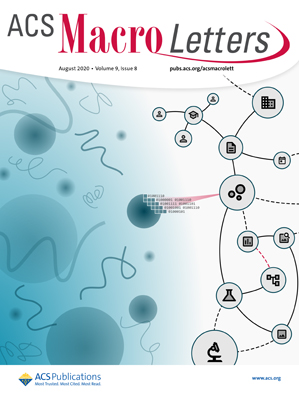协同氧化还原反应,共同生产 H2O2 和高附加值化学品:实现可持续发展的双功能光催化技术
IF 5.1
Q1 POLYMER SCIENCE
引用次数: 0
摘要
在半导体驱动的光氧化反应中将 H2O2 演化与氧化有机合成结合在一起具有很大的吸引力,因为只需使用太阳光作为能量输入,就能同时生产 H2O2 和高价值化学品。这种双功能光催化方法不使用牺牲剂,可同时生产 H2O2 和高价值有机化学品。这种策略有望实现绿色、可持续的有机合成,并将温室气体排放降至最低。在这篇综述中,我们首先阐明了在基于半导体的光催化剂上同时利用光激发电子和空穴合成 H2O2 和选择性有机氧化的合作光氧化一体化的基本原理。随后,对 H2O2 和高附加值化学品的协同光氧化合成的最新进展进行了全面综述。值得注意的是,报告对揭示光氧化还原反应机理的技术进行了深入讨论,并提出了独到见解。最后,全面讨论了这一蓬勃发展的领域所面临的重大挑战和前景。希望这篇综述能为合理设计此类双功能光催化系统提供重要指导,从而进一步推动经济、环保的 H2O2 和高价值化学品生产的发展。本文章由计算机程序翻译,如有差异,请以英文原文为准。
Synergistic redox reactions toward co‐production of H2O2 and value‐added chemicals: Dual‐functional photocatalysis to achieving sustainability
Integrating H2O2 evolution with oxidative organic synthesis in a semiconductor‐driven photoredox reaction is highly attractive since H2O2 and high‐value chemicals can be concurrently produced using solar light as the only energy input. The dual‐functional photocatalytic approach, free from sacrificial agents, enables simultaneous production of H2O2 and high‐value organic chemicals. This strategy promises a green and sustainable organic synthesis with minimal greenhouse gas emissions. In this review, we first elucidate the fundamental principles of cooperative photoredox integration of H2O2 synthesis and selective organic oxidation with simultaneous utilization of photoexcited electrons and holes over semiconductor‐based photocatalysts. Afterwards, a thorough review on the recent advancements of cooperative photoredox synthesis of H2O2 and value‐added chemicals is presented. Notably, in‐depth discussions and insights into the techniques for unravelling the photoredox reaction mechanisms are elucidated. Finally, critical challenges and prospects in this thriving field are comprehensively discussed. It is envisioned that this review will serve as a pivotal guidance on the rational design of such dual‐functional photocatalytic system, thereby further stimulating the development of economical and environmentally benign H2O2 and high‐value chemicals production.
求助全文
通过发布文献求助,成功后即可免费获取论文全文。
去求助
来源期刊
CiteScore
10.40
自引率
3.40%
发文量
209
审稿时长
1 months
期刊介绍:
ACS Macro Letters publishes research in all areas of contemporary soft matter science in which macromolecules play a key role, including nanotechnology, self-assembly, supramolecular chemistry, biomaterials, energy generation and storage, and renewable/sustainable materials. Submissions to ACS Macro Letters should justify clearly the rapid disclosure of the key elements of the study. The scope of the journal includes high-impact research of broad interest in all areas of polymer science and engineering, including cross-disciplinary research that interfaces with polymer science.
With the launch of ACS Macro Letters, all Communications that were formerly published in Macromolecules and Biomacromolecules will be published as Letters in ACS Macro Letters.

 求助内容:
求助内容: 应助结果提醒方式:
应助结果提醒方式:


